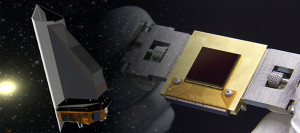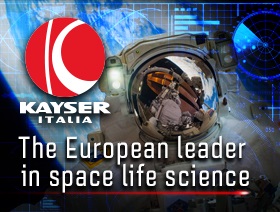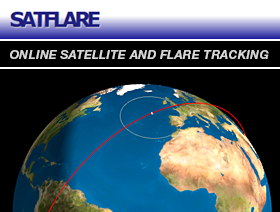
The NEOCam sensor (right) is the basis of the proposed NEOCam orbital telescope (Credits: NASA/JPL).
NASA’s Near Earth Object Camera (NEOCam) is an infrared sensor intended to enhance detection and tracking of asteroids and comets. In April, scientists and engineers simulated the temperatures and pressure of deep space, to assess operation and performance of the sensor. NEOCam, an output of 10 years of joint efforts of between Jet Propulsion Laboratory (JPL), University of Rochester, and Teledyne Imaging Sensors of Camarillo, successfully passed this critical test.
“This sensor represents one of many investments made by NASA’s Discovery Program and its Astrophysics Research and Analysis Program in innovative technologies to significantly improve future missions designed to protect Earth from potentially hazardous asteroids,” said Lindley Johnson, program executive for NASA’s Near-Earth Object Program Office in Washington D.C.
Optical telescopes do not provide exact estimation of the size of Near Earth objects as such objects do not emit visible light but reflect it. Hence, lighter colored objects may be incorrectly interpreted as large objects. Infrared sensors are comparatively more accurate in terms of capturing the size of the NEO.
“Infrared sensors are a powerful tool for discovering, cataloging and understanding the asteroid population,” said Amy Mainzer, Principal investigator of NASA’s NEOWISE mission at JPL. “When you observe a space rock with infrared, you are seeing its thermal emissions, which can better define the asteroid’s size, as well as tell you something about composition.”
NEOCam could be a key component of NASA’s long term plans to detect-capture-relocate Near Earth Objects (NEO), for the purposes such as protecting Earth, and exploration.
NASA’s not the only one looking for asteroids. Meet Canada’s NEOSSat:























































![A trajectory analysis that used a computational fluid dynamics approach to determine the likely position and velocity histories of the foam (Credits: NASA Ref [1] p61).](http://www.spacesafetymagazine.com/wp-content/uploads/2014/05/fluid-dynamics-trajectory-analysis-50x50.jpg)


